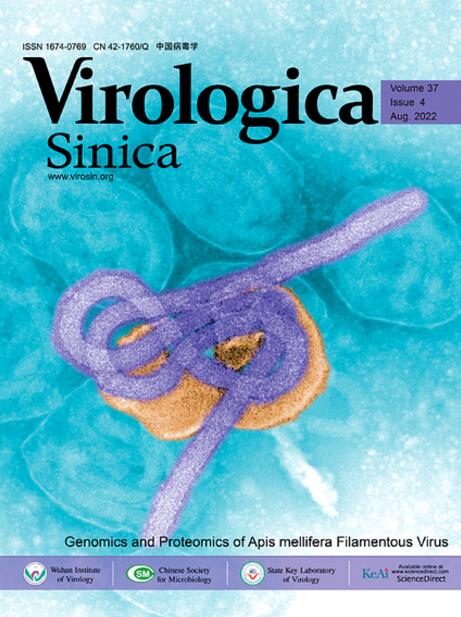对病毒蛋白所携带的组蛋白修饰模拟图案进行全病毒组分析。
IF 5.5
3区 医学
Q1 Medicine
引用次数: 0
摘要
组蛋白模拟(HM)是指病毒蛋白中存在短的线性基团,这些基团模仿宿主组蛋白的关键区域。这些基团有可能干扰宿主细胞表观基因组并抵消抗病毒反应。最新研究表明,HM 对流感病毒和冠状病毒的致病和传播至关重要。然而,HM 在真核病毒中的分布、特征和功能仍不清楚。在此,我们开发了一种生物信息学管道--组蛋白基序扫描(HiScan),用于识别病毒蛋白中的HM基序并在硅学中预测其功能。通过使用HiScan分析592,643个病毒蛋白,我们发现假定的HM基团广泛分布于大多数病毒蛋白中。在动物病毒中,DNA病毒和RNA病毒的HM基序比例约为1.9:1,基因组较小的病毒HM基序密度更高。值得注意的是,冠状病毒的HM基序分布不均,β-冠状病毒(包括大多数人类致病性冠状病毒)比其他冠状病毒含有更多的HM基序,主要分布在NSP3、S和N蛋白中。总之,我们利用 HiScan 对病毒体范围内的 HM 基序进行了筛选,发现 HM 基序在大多数病毒蛋白中的分布广泛但不均衡,DNA 病毒更偏爱 HM 基序。病毒 HM 可能在调节病毒致病性和病毒-宿主相互作用方面发挥重要作用,因此是病毒学和抗病毒药物研究中一个具有吸引力的领域。本文章由计算机程序翻译,如有差异,请以英文原文为准。
Virome-wide analysis of histone modification mimicry motifs carried by viral proteins
Histone mimicry (HM) refers to the presence of short linear motifs in viral proteins that mimic critical regions of host histone proteins. These motifs have the potential to interfere with host cell epigenome and counteract antiviral response. Recent research shows that HM is critical for the pathogenesis and transmissibility of influenza virus and coronavirus. However, the distribution, characteristics, and functions of HM in eukaryotic viruses remain obscure. Herein, we developed a bioinformatic pipeline, Histone Motif Scan (HiScan), to identify HM motifs in viral proteins and predict their functions in silico. By analyzing 592,643 viral proteins using HiScan, we found that putative HM motifs were widely distributed in most viral proteins. Among animal viruses, the ratio of HM motifs between DNA viruses and RNA viruses was approximately 1.9:1, and viruses with smaller genomes had a higher density of HM motifs. Notably, coronaviruses exhibited an uneven distribution of HM motifs, with betacoronaviruses (including most human pathogenic coronaviruses) harboring more HM motifs than other coronaviruses, primarily in the NSP3, S, and N proteins. In summary, our virome-wide screening of HM motifs using HiScan revealed extensive but uneven distribution of HM motifs in most viral proteins, with a preference in DNA viruses. Viral HM may play an important role in modulating viral pathogenicity and virus-host interactions, making it an attractive area of research in virology and antiviral medication.
求助全文
通过发布文献求助,成功后即可免费获取论文全文。
去求助
来源期刊

Virologica Sinica
Biochemistry, Genetics and Molecular Biology-Molecular Medicine
CiteScore
7.70
自引率
1.80%
发文量
3149
期刊介绍:
Virologica Sinica is an international journal which aims at presenting the cutting-edge research on viruses all over the world. The journal publishes peer-reviewed original research articles, reviews, and letters to the editor, to encompass the latest developments in all branches of virology, including research on animal, plant and microbe viruses. The journal welcomes articles on virus discovery and characterization, viral epidemiology, viral pathogenesis, virus-host interaction, vaccine development, antiviral agents and therapies, and virus related bio-techniques. Virologica Sinica, the official journal of Chinese Society for Microbiology, will serve as a platform for the communication and exchange of academic information and ideas in an international context.
Electronic ISSN: 1995-820X; Print ISSN: 1674-0769
 求助内容:
求助内容: 应助结果提醒方式:
应助结果提醒方式:


